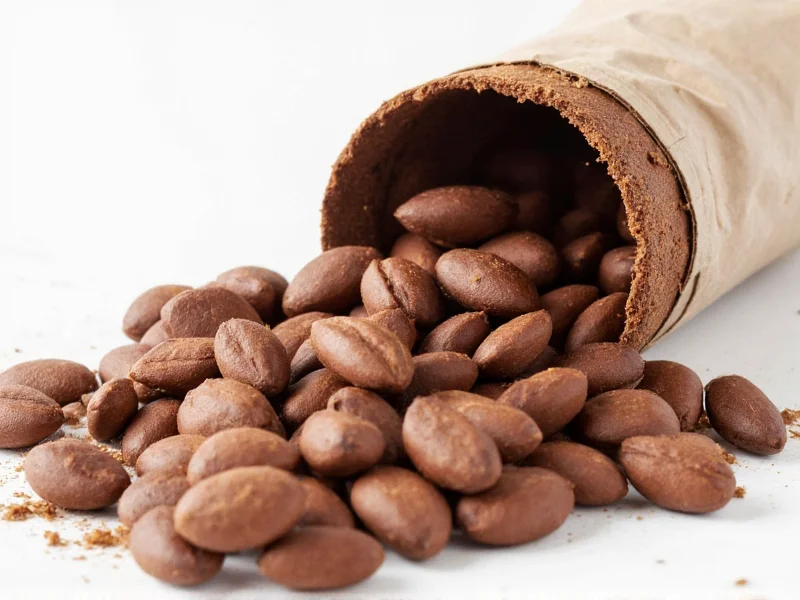Proper cocoa storage preserves flavor, prevents spoilage, and maintains the rich chocolate essence essential for baking and beverages. Many home bakers unknowingly compromise their cocoa’s quality through improper storage techniques, leading to flat-tasting desserts and wasted ingredients. Understanding the science behind cocoa preservation transforms ordinary pantry management into a strategic approach for culinary excellence.
Understanding Cocoa Types and Their Storage Needs
Cocoa products require different storage approaches based on their composition. Natural cocoa powder, Dutch-processed cocoa, and specialty cocoa blends each respond uniquely to environmental factors. Natural cocoa powder with its higher acidity remains more stable at room temperature, while Dutch-processed varieties with alkalization may develop off-flavors more quickly when exposed to moisture.
Unsweetened cocoa powder contains minimal fat (about 10-12%) compared to cocoa butter or chocolate bars, making it less prone to rancidity but more vulnerable to moisture absorption. This fundamental difference explains why cocoa powder storage guidelines differ significantly from those for chocolate products.
Optimal Storage Conditions for Maximum Freshness
Temperature control represents the most critical factor in cocoa preservation. The ideal range of 60-70°F (15-21°C) prevents fat bloom and flavor degradation. Temperatures above 75°F (24°C) accelerate oxidation, while fluctuations cause condensation inside containers.
Humidity levels below 60% prevent moisture absorption that leads to clumping and microbial growth. Light exposure, particularly UV rays, breaks down cocoa flavonoids responsible for both flavor and health benefits. A pantry interior shelf away from stove heat and sink moisture provides the most stable environment for how to store cocoa powder long term.
Step-by-Step Cocoa Storage Protocol
- Transfer cocoa from original packaging to an airtight container immediately after opening
- Use containers with silicone seals for optimal moisture protection
- Place a food-safe desiccant packet in the container to absorb ambient moisture
- Label containers with opening date for freshness tracking
- Store containers in a consistent location away from temperature fluctuations
- Use clean, dry utensils when scooping to prevent moisture introduction
Container Selection Guide for Cocoa Preservation
The right container makes a significant difference in how to properly store cocoa powder. Glass jars with clamp seals outperform plastic containers in moisture resistance, though high-quality #5 polypropylene containers provide adequate protection. Avoid containers with strong odors as cocoa readily absorbs surrounding scents.
| Container Type | Moisture Protection | Light Protection | Recommended Duration |
|---|---|---|---|
| Amber Glass Jar | Excellent | Excellent | 18-24 months |
| Stainless Steel | Excellent | Good | 15-18 months |
| Food-Grade Plastic | Good | Fair | 12-15 months |
| Original Packaging | Fair | Poor | 3-6 months |
Shelf Life Expectations and Spoilage Indicators
Properly stored unopened cocoa maintains peak quality for 24-36 months past the best-by date. Once opened, expect 12-24 months of optimal freshness depending on storage conditions. The best container for storing cocoa extends this timeframe by minimizing exposure to degrading elements.
Discard cocoa showing these spoilage signs:
- Musty or sour odor instead of rich chocolate aroma
- Visible mold growth (rare but possible in high humidity)
- Hard clumps that don't break apart with gentle pressure
- Faded color (dark brown should remain vibrant)
- Stale or cardboard-like taste
Avoiding Common Cocoa Storage Mistakes
Many home bakers inadvertently compromise their cocoa through these preventable errors:
- Refrigeration: Temperature fluctuations cause condensation inside containers
- Freezer storage: Moisture absorption occurs during thawing cycles
- Leaving in original packaging: Paper-lined bags offer minimal moisture protection
- Storing near spices: Cocoa absorbs strong odors from neighboring pantry items
- Using wet utensils: Introduces moisture that promotes clumping
Understanding does cocoa powder go bad if not refrigerated addresses a common misconception. Room temperature storage actually preserves quality better than refrigeration for this low-moisture product.
Special Considerations for Bulk Cocoa Storage
When storing larger quantities of cocoa, implement a rotation system using smaller secondary containers. Transfer only the amount needed for immediate use to the kitchen, keeping the primary storage container sealed in optimal conditions. For professional kitchens or frequent bakers, consider vacuum-sealed storage with oxygen absorbers for extended shelf life up to 36 months.
Reviving Slightly Stale Cocoa
If your cocoa has lost some freshness but shows no spoilage signs, restore flavor intensity by briefly toasting it. Spread 1-2 tablespoons on a baking sheet and warm in a 300°F (150°C) oven for 3-5 minutes, stirring occasionally. Allow to cool completely before returning to storage. This technique works best for natural cocoa powder and shouldn't be used with Dutch-processed varieties.











 浙公网安备
33010002000092号
浙公网安备
33010002000092号 浙B2-20120091-4
浙B2-20120091-4